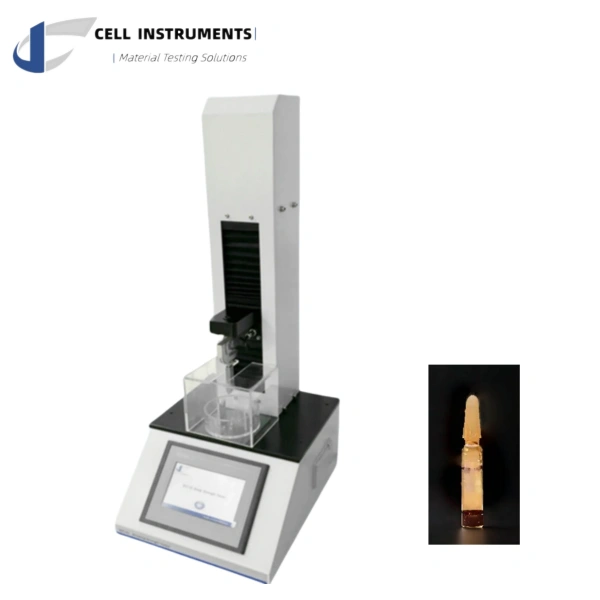Introduction
In the pharmaceutical industry, ensuring the integrity and usability of ampoules is essential for patient safety and production efficiency. Reliable lab equipment for ampoule testing plays a vital role in assessing quality parameters such as breaking force, hydrolytic resistance, and annealing quality. One of the most authoritative standards in this domain is ISO 9187, which outlines the requirements and procedures for compliance testing ampoule strength. This article offers a comprehensive guide to ampoule testing, test equipment, and how to achieve full compliance with ISO 9187 using precision instruments like the Cell Instruments Ampoule Break Force Tester BST-01.
Understanding ISO 9187 Ampoule Testing Requirements
ISO 9187 ampoule testing specifies the quality and performance parameters for ampoules intended for injectables. These include:
- Hydrolytic resistance: Ensures the glass doesn’t degrade upon contact with water-based injectables. As per ISO 9187-1 and ISO 4802, ampoules must meet Hydrolytic Resistance Class HC1.
- Annealing quality: Ampoules must be stress-relieved during manufacturing to prevent spontaneous breakage. Residual stress should not exceed an optical retardation of 50 nm/mm.
- Breaking force: Perhaps the most critical test, it verifies that ampoules break cleanly and consistently at a predetermined breaking point.
By adhering to these specifications, manufacturers guarantee both the functional and safety aspects of ampoules.
Core Components of Lab Equipment for Ampoule Testing
To meet ISO 9187 requirements, specialized lab equipment for ampoule testing must be employed. The essential features include:
- Force measurement capability up to 200 N
- Constant test speed of 10 mm/min
- High-resolution load cell with accurate data acquisition
- Adaptable clamps for holding various ampoule sizes
A reliable tensile testing setup ensures consistent breaking force measurement. While ISO allows some procedural flexibility, accurate positioning and environmental control (20 ± 5 °C) are vital.
How to Perform Compliance Testing Ampoule Strength
Performing compliance testing ampoule strength involves a structured process:
- Sample Selection and Conditioning
Follow ISO 2859-1 for random sampling and stabilize samples at 20 ± 5 °C before testing. - Test Setup
Use a tensile testing machine aligned at a 90° angle to the ampoule axis. Ensure that the metal bars apply force directly at the center of the cut to avoid force deviation. - Execution
Apply force at a constant rate (10 mm/min) until the ampoule breaks. Record the peak force, ensuring it falls within the limits outlined in ISO 9187-1 Table 2. - Interpretation
Evaluate the clean break quality and verify that the breaking point has not failed due to misalignment or improper annealing.
Recommended Equipment: Cell Instruments Ampoule Break Force Tester BST-01

For laboratories seeking accurate and repeatable results, Cell Instruments‘ BST-01 Ampoule Break Force Tester is a trusted solution. Engineered to meet ISO 9187 specifications, it features:
- Precise load measurement up to 200 N
- Programmable test speeds
- User-friendly software for automated data logging
- Customizable fixtures to fit different ampoule sizes
This instrument is ideal for quality control departments, pharmaceutical production lines, and R&D labs aiming to ensure regulatory compliance and product safety.
Advantages of Using Lab Equipment Designed for ISO 9187 Compliance
Employing certified lab equipment for ampoule testing ensures:
- Regulatory compliance with ISO 9187 and USP requirements
- Improved patient safety by ensuring predictable ampoule opening
- Operational efficiency by reducing product failures
- Documentation support for audits and inspections
By integrating precise instrumentation and standard-compliant methods, organizations uphold quality assurance and minimize liability risks.
Conclusion
Ampoule integrity is not only a regulatory obligation but a cornerstone of safe pharmaceutical delivery. Selecting the right lab equipment for ampoule testing is crucial for performing ISO 9187 ampoule testing and delivering valid, consistent compliance testing ampoule strength results. The BST-01 tester by Cell Instruments offers unmatched precision and compliance, making it a valuable asset in modern pharmaceutical testing environments.
